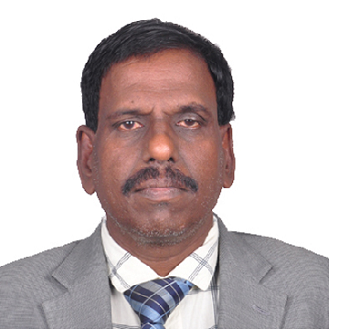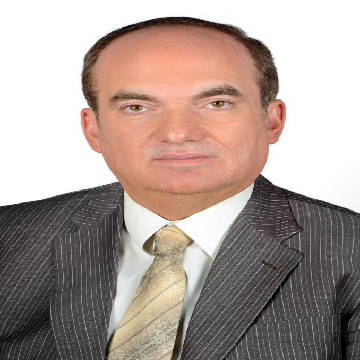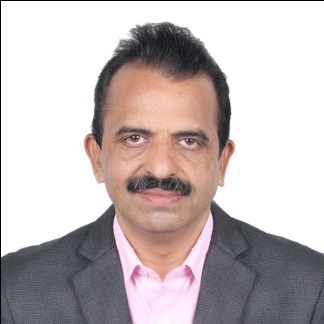Day :
- Heart Diseases|Women’s Cardiovascular Health|Cardio Oncology
Location: Amsterdam
Session Introduction
Ramachandran Muthiah
Professor Dr.SMCSI Mission hospital & Medical college INDIA
Title: Taussig-bing heart

Biography:
Ramachandran Muthiah, Consultant Physician & Cardiologist, Zion hospital, Azhagiamandapam, Kanyakumari District, India. Completed M.D. in General Medicine in 1996, D.M. in cardiology in 2003 under Tamil Nadu Dr.MGR Medical University, Chennai, India. Worked as medical officer in Rural health services for 5 years and in teaching category as Assistant Professor at Madras medical college, Coimbatore medical college, Thoothukudi medical college and Professor at Dr.SMCSI Mission hospital & Medical college, Karakonam, Trovandrum and Azeezia Medical college, Kollam. Published many papers in Cardiosource, American College of Cardiology Foundation, Case Reports in Clinical Medicine (SCIRP) and Journal of Saudi Heart Association. Special research on Rheumatic fever and Endomyocardial fibrosis in tropical belts, Myxomas, Ineffective endocarditis, apical hypertrophic cardiomyopathy, Ebstein’s anomaly, Rheumatic Taussig-Bing Heart, Costello syndrome and Tetralogy of Fallot.
Abstract:
Samer Ellahham
Cleveland Clinic, US and Cleveland Clinic Abu Dhabi, UAE
Title: Update on nutrition in chronic heart failure

Biography:
Abstract:
Chronic heart failure is defined as decreased ability of heart due to variousreasons.Despite improvements in pharmacologic treatment, many patients with heart failure have severe and persistent symptoms, and their prognosis remains poor. The objectives of nutrition therapy in heart failure are to prevent from water retention and edema, to avoid from hard digestion and to offer a balanced diet. To avoid fluid retention and edema, daily sodium and fluid intake must be monitored carefully. Main dilemma of the heart failure patients is the obesity-cachexia dilemma. Since one of the main reasons of heart failure is cardiovascular diseases, in first phase, the patient may be obese. In the later phases, cachexia may show up. It was shown that cachexia is associated with mortality. Within this period, patients should not be over-fed and the patient should pass from catabolic state to anabolic state slowly. If the gastrointestinal track is functional oral/enteral feeding must be preferred. Large, controlled and well-designed studies must be conducted to evaluate the benefits of nutritional practices such as nutritional assessment, enteral feeding and nutrient supports in heart failure patients.
Yacob Mathai
Marma Heatth Centre,Kochi ,Kerala,India
Title: The pyrexia temperature never damage the cells of brain or harm the body.

Biography:
Abstract:
All treatments for fever are based on the belief that fits is the result of 41 degree Celsius temperature and it damages cells of brain and body. At the same time there is no evidence based tests or concrete diagnosing methods to the belief that fits and brain damage is the result of pyrexia [1].Necessary ingredients to destroy brain cells and fits cannot be seen in fever.In pyrexia or absence of fever a fainted patient fell on the floor with unconscious state and destroy cells of brain, and necessary ingredients to become conscious are same.When disease increases essential blood circulation and energy level also decreases. The vertical height between heart and brain is more than one feet. When the disease becomes severe, ability to pump the blood to the brain decreases. As a result of this brain cells are damaged. so the patient might be paralyzed or may even die.In pyrexia or absence of fever, when blood flow to the brain decreases and fits are formed. There is no other way than this to increase blood circulation to the brain.It is a sensible and discreet action of brain to protect the life or organ.
Recovery from Fits.The patient become conscious before the time to get decreasing the temperature of fever. When the fainted patient lie on the floor, the vertical height between heart and brain is decreased, blood circulation increased to brain.
Self checking methods.When the fainted patient lie on the floor,The patient can stand straight and lie on bed alternatively.Then the patient can experience himself the intensity of blood circulation.T he patient can experience when he stand his blood circulation decreases and when lie on the bed the blood circulation decreases.Besides that he can also experience increased blood circulation when lie on the bed raise the foot higher than head.
Dr. Remya Sudevan
Amrita Institute of Medical Sciences, Kochi,India
Title: Use of cardiovascular drugs in the compliance of secondary prevention of coronary artery disease- Hospital based multicentric cross sectional survey
Time : 3.30-4.30
